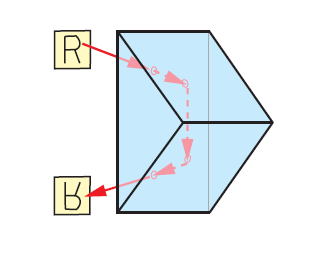
 TECHSPEC® components are designed, specified, or manufactured by Edmund Optics. Learn More
TECHSPEC® components are designed, specified, or manufactured by Edmund Optics. Learn More
| Volume Pricing | |
|---|---|
| Qty 1-5 | S$595.91 each |
| Qty 6-25 | S$476.43 each |
| Qty 26-49 | S$448.05 each |
| Need More? | Request Quote |
TECHSPEC® Nd:YAG Laser Line λ/20 UV Fused Silica Right Angle Prisms offer a combination of precision surface flatness and guaranteed laser damage threshold AR coatings. These prisms are ideal for beam steering with minimal wavefront distortion due to λ/20 surface flatness on all faces. A ±15 arcsecond angular tolerance ensures consistent alignment for volume integration. TECHSPEC® Nd:YAG Laser Line λ/20 UV Fused Silica Right Angle Prisms are designed for transmission through the anti-reflection coated legs of the prism, resulting in a 90° turn in beam direction. A vertically integrated manufacturing process ensures these prisms are easily scaled for custom requests.

Edmund Optics offers comprehensive custom manufacturing services for optical and imaging components tailored to your specific application requirements. Whether in the prototyping phase or preparing for full-scale production, we provide flexible solutions to meet your needs. Our experienced engineers are here to assist—from concept to completion.
Our capabilities include:
Learn more about our custom manufacturing capabilities or submit an inquiry here.
or view regional numbers
QUOTE TOOL
enter stock numbers to begin
Copyright 2024, Edmund Optics Singapore Pte. Ltd, 18 Woodlands Loop #04-00, Singapore 738100
California Consumer Privacy Acts (CCPA): Do Not Sell or Share My Personal Information
California Transparency in Supply Chains Act
The FUTURE Depends On Optics®